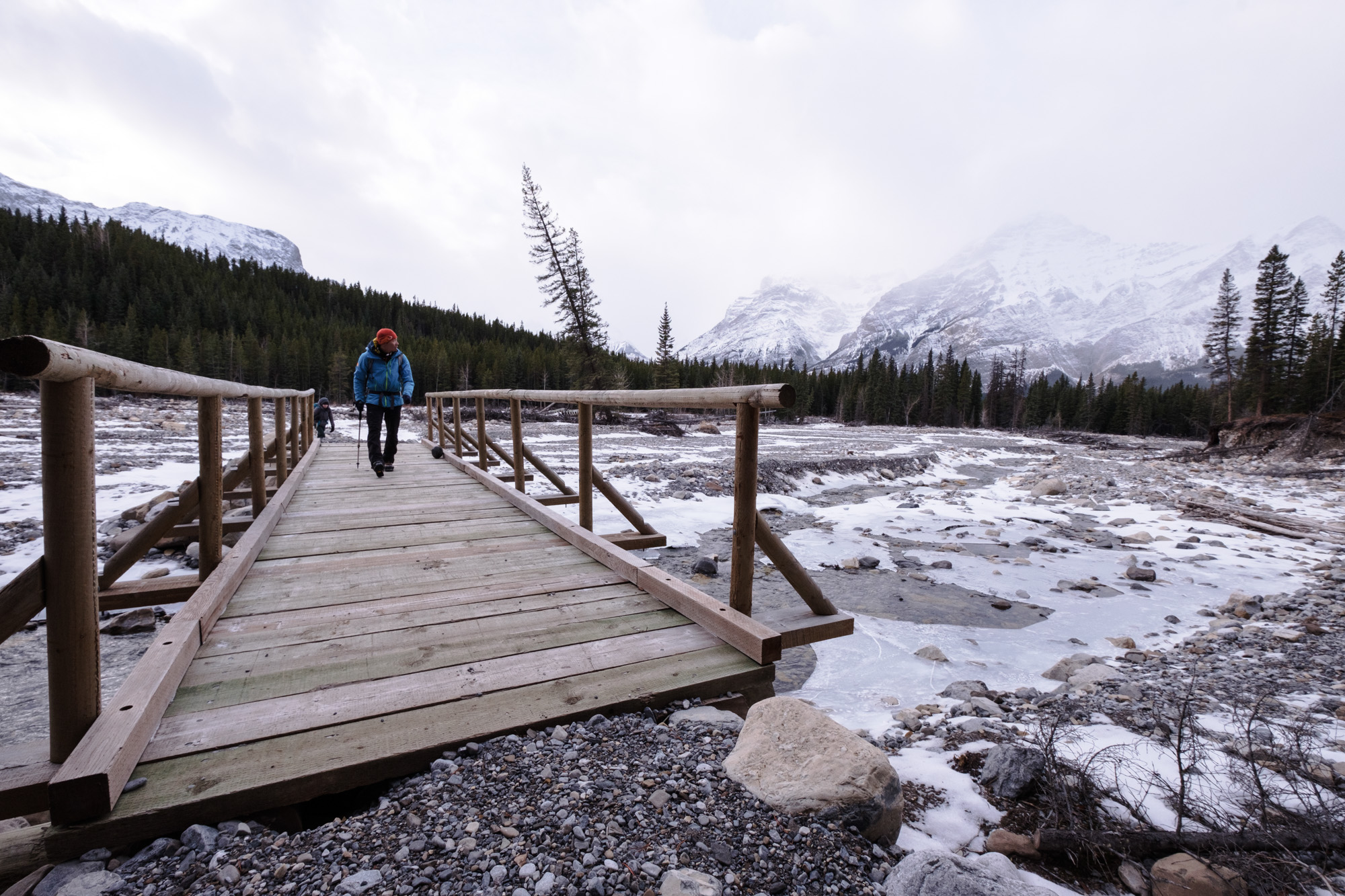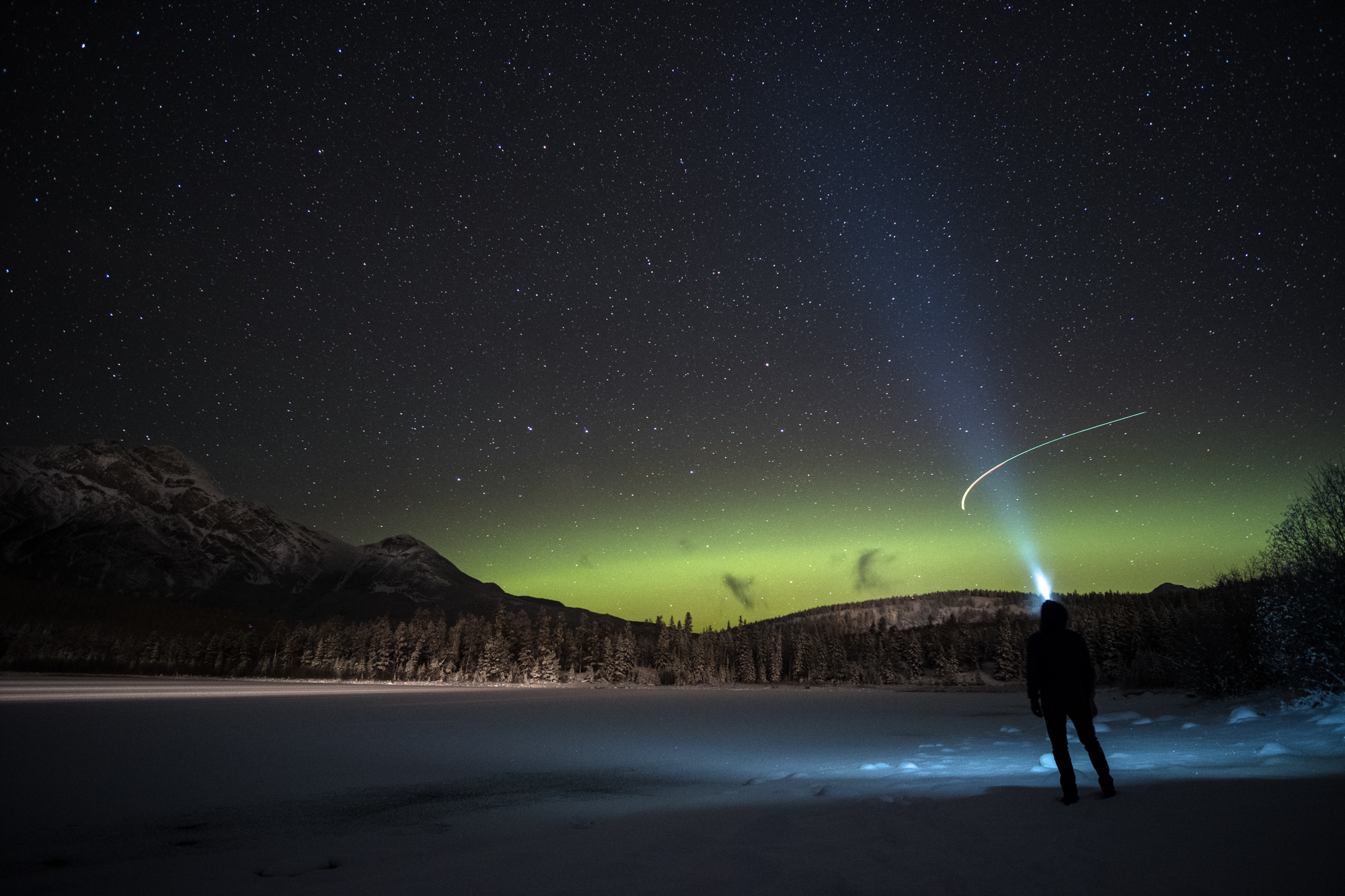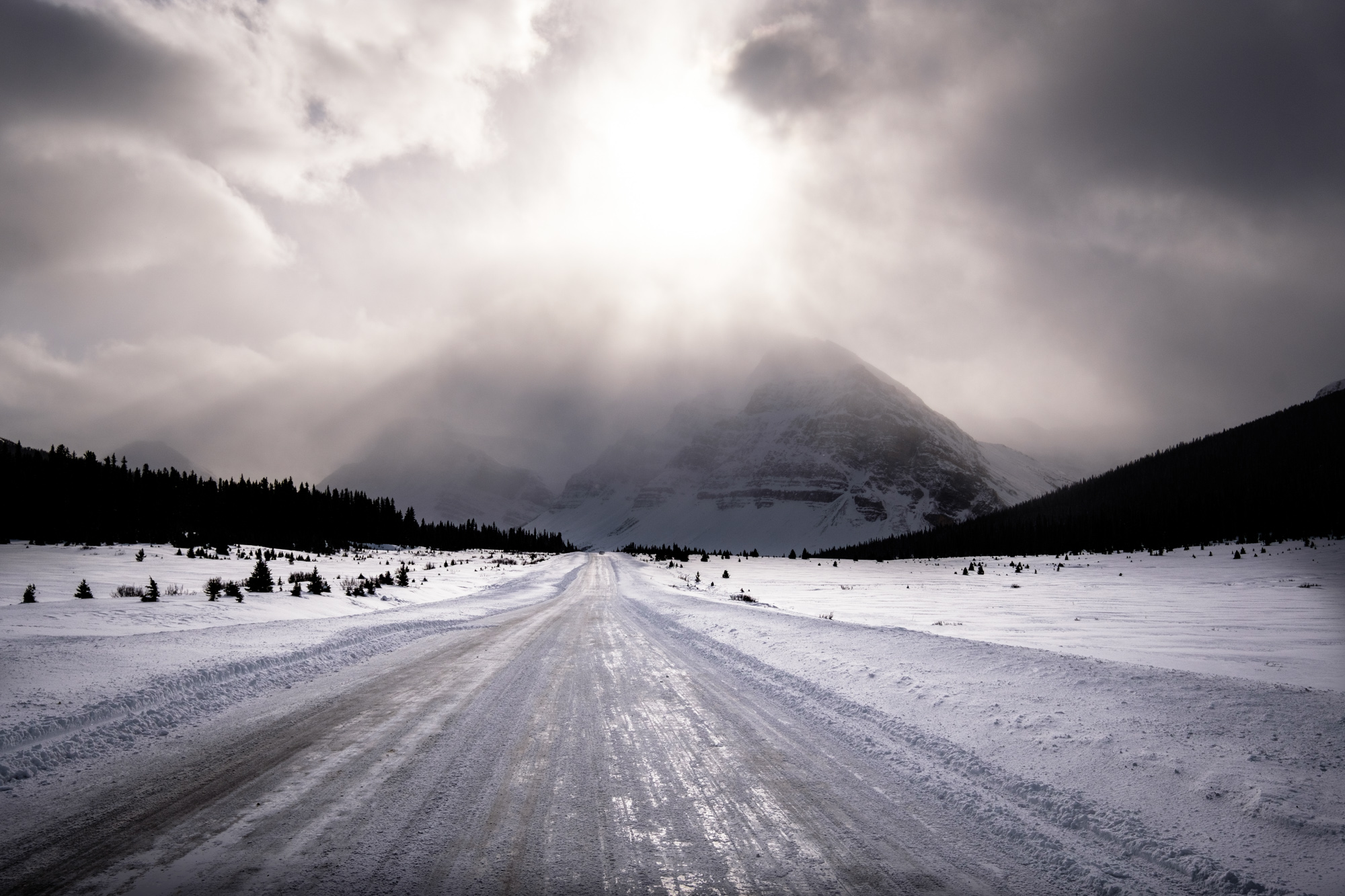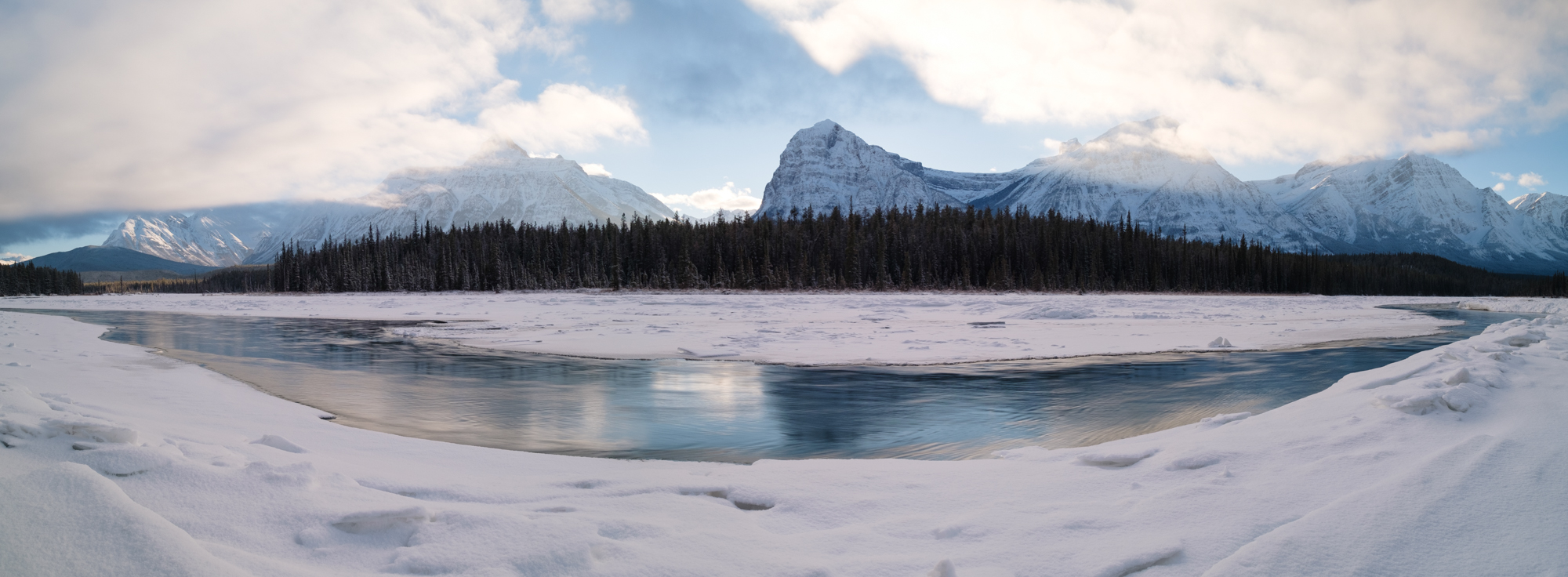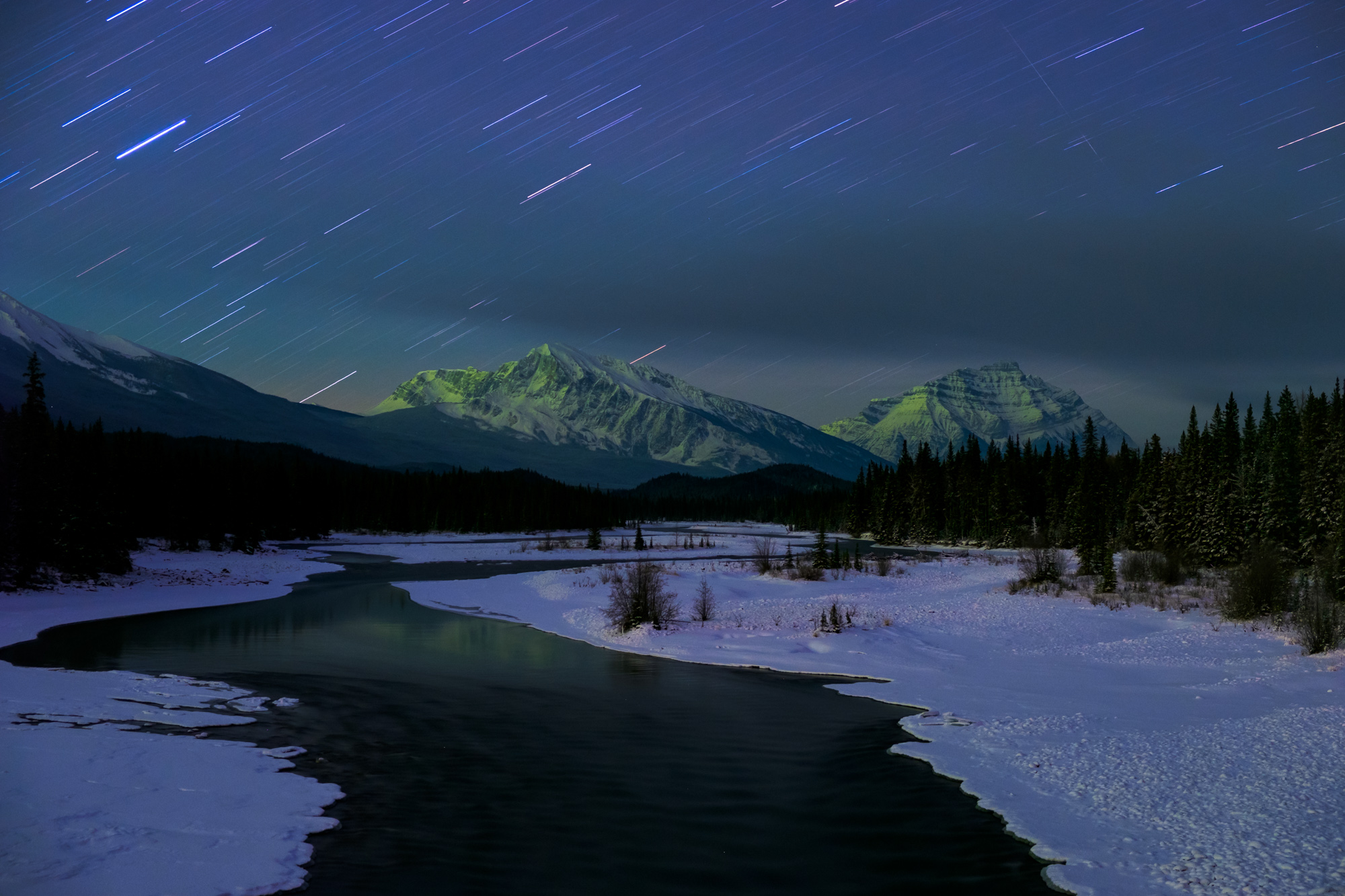Why are you here? My 9-day trip to Alberta to visit the Canadian Rockies was the longest trip I'd done in 2017 and the longest solo trip I'd done in all my travels. It was well planned and planned well in advance. And yet, when I arrived and I was asked why, I didn't really have an answer.
"Mountains and cold air," I'd respond. "California is too warm." I could've driven 4 hours to the Sierras for mountains and cold air. It would've been cheaper and quicker. After trying to answer the why for 9 days I decided I didn't need a solid, single reason for the trip. Chasing mountains, running away, taking pictures, whatever. I went.
If you use Instagram at all, the Canadian Rockies are probably familiar to you. Moraine Lake, Mount Rundle, Peyto Lake, Abraham Lake, Mount Assiniboine - these are heavily Instagrammed locations in the Canadian Rockies. I enjoy visiting popular places in their off seasons and then avoiding the popular sightseeing areas, to get a different perspective. I make some exceptions - Tunnel View in Yosemite National Park, for example - and I made one for the view of Mount Rundle from Vermillion Lakes in Banff National Park. It is accessible, peaceful, and provides a stunning portrait of a unique mountain. The below photograph is from my first sunrise on my trip to Alberta.
At the core of Banff National Park is the township of Banff. The town reminds me more of Waikiki from my home state of Hawai'i than a town you'd find in the middle of a national park. Despite the social media shares and the touristy nature of Banff, I still found the surrounding mountains to be wild. It is easy to access the Canadian Rockies and view the peaks from afar. Getting much closer, though, felt difficult. These mountains looked and felt truly dangerous. For me, the feeling of respectful fear adds to the allure and the mythology of these mountains. I want to get closer to them, to reach out and touch them. I was unable to get close on my trip, but I did take many photographs from afar.
The Icefields Parkway, Part 1
After spending the morning at Vermillion Lakes I set off to begin the drive to Jasper, a 288 km trek from Banff. 230 km of the drive - the stretch from Lake Louise to Jasper - is on Alberta Highway 93, famously known as the Icefields Parkway. It is a bit of a treacherous drive in the winter: there is no cell phone service for most of the drive, the roadway is exposed to multiple avalanche slopes, and the road is not plowed to the roadway surface once snow accumulates. I remember conflicting feelings the night before as snowed steadily in Banff: I was happy to be in a beautiful place as the snow fell, but concerned about the conditions of the long road ahead. Worry disappeared when rubber met the (snowy) road and the Canadian Rockies rose to fill the horizon in all directions. Smile on my face, camera gear ready to go, and driving playlist cranked up, I pushed my rental car forward on one of the most beautiful drives in North America.
The road conditions ranged from two tire tracks of black ice / bare road mix, to a sheet of black ice, to 5" of fresh, unplowed snow. Not too bad. I was able to maintain highway speeds most of the way, thanks to sparse vehicle traffic. I only saw about one or two dozen vehicles the entire day. The main challenge was finding safe places to pull over and take pictures. The side of the road was buried in a just-too-deep-for-my-SUV-rental-car snowbank - I learned this the hard way when I very nearly got my car stuck in one (the only time I freaked out a little during the drive). Turnouts were rare, and many of them were also buried in just-too-deep snow. Large stretches of road were off-limits to stopping because they are situated in avalanche zones. Not exactly the type of warning you want to ignore. Six hours later, exhausted from focusing on the drive and running around on the side of the road shooting, I arrived in Jasper unscathed.
The Northern Lights
I sit in the cook cabin with my gear sprawled out on the communal table. Perks of being the only guest at a hostel: big spaces all to yourself. As I pack for the morning's hike I consider plans for the rest of the night. Sleep sounds nice. It was a long day. Drove the entire parkway and explored Jasper. I step out of the kitchen and head to my car to rummage through the bags I left in the trunk. The hostel manager, taking care of the grounds, is just outside.
"Hello! How is your night going?"
"Great! Just organizing my things here and thinking about plans for tomorrow."
He looks up at the sky. "It's a clear night, for now. I'm going to turn out all the lights because there's a chance the Northern Lights will come out. If it's dark enough, you can see them."
"Oh really?" I look up. The stars are out. I exhale and my breath clouds the air. It is cold. Under 10 degrees Fahrenheit.
"Yes. If you get out of town to someplace dark, and look to the north, you might see them. They will start coming over the mountains, it'll look like a search light to start. Just look to the north."
Motivation enough for me. I packed up, prepared my camera gear and warmest clothes, and drove out of town. The words of my hostel manager pushed me to drive to dark spaces around Jasper, and I'd eventually have my first experience under the Northern Lights. The lesson? Always follow up on tips from your hostel manager.
The city lights of Jasper mix with the Northern Lights above the Athabasca River.
The Icefields Parkway, Part II
I planned to spend one full day in Jasper before driving back down south to my next hostel along the Icefields Parkway. A short stay. The idea was to decrease the chance I'd get stuck up north since highway closures and poor driving conditions are common this time of year. I got a bit lucky on the drive down south: temperatures warmed up above freezing, clearing the black ice and snow. I threw everything into the car, said goodbye to the empty HI Maligne Canyon hostel, and started the drive down to the Rampart Creek Hostel at sunrise.
I was really excited to drive the Icefields Parkway at sunrise. Imagine being on an open road, mountains in all directions, as the sky explodes with the hues of the rising sun. The prominence of the Canadian Rockies leads to rapid lighting transitions - similar to what you see in Yosemite Valley. I raced these transitions, looking out for the best place to stop. Then, I saw it. Breaking one of my top Icefields Parkway rules ("Don't stop in the middle of the road") I smashed my brakes and brought the rental car to a stop. This is the one photograph I have showing the sunrise that morning, and it's the only one I need.
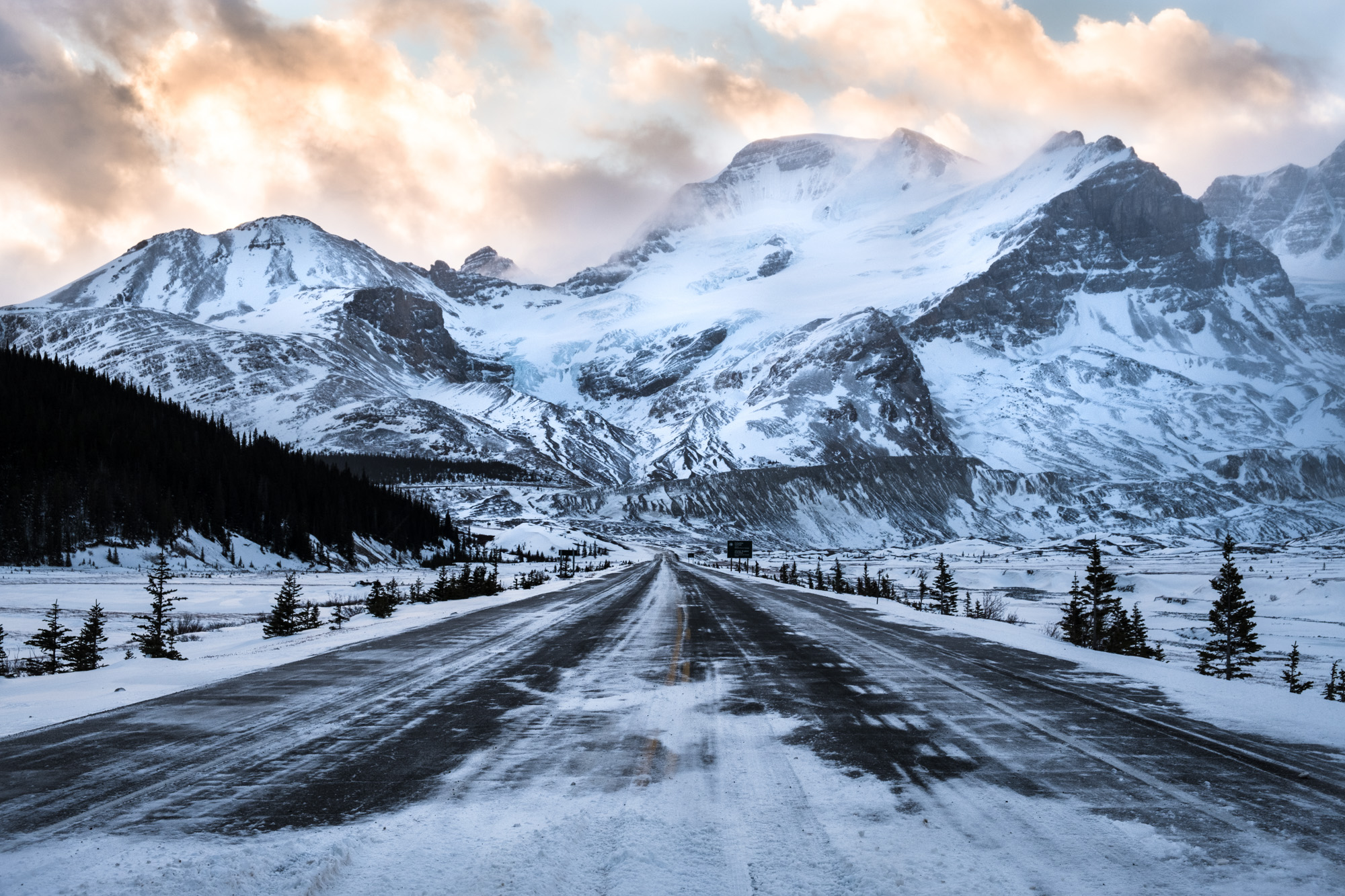
Happy and appreciative, I continued on, simply enjoying the drive. Chasing light and photographs can be tiring and it can be relieving to just let it go so you can enjoy the moment. Getting the capture you want can help let go.
After an hour or so of driving I reached the Athabasca Glacier. During the summer months, the trailhead parking lot and the nearby Columbia Icefield Discovery Centre are likely full to the brim with tourists swarming to the most-visited glacier in North America. I arrived to a closed visitor center and an empty parking lot - unsurprising at a time of year where I'd see fewer than a dozen cars during an hour's drive down the highway.
When I tried to open my door, it immediately slammed closed. I put my shoulder into it and forced it open against a strong, persistent 40 MPH+ wind. Through couple hours I explored around the glacier, the wind did not let up once. A car or two did arrive at the parking lot, but no one left their vehicles. I seek out opportunities like these: being willing (and prepared) to face difficult conditions to experience beautiful places without crowds.
The Athabasca Glacier, shot a few hundred feet from the parking lot. Less than 100 years ago I would have been standing on the glacier as I took this photograph.
The Athabasca Glacier tells the tale of a changing, warming climate. The walk from the parking lot to the toe of the glacier has been getting longer over the years and Parks Canada has marked the recession of the glacier along the road so you can feel it during your visit. A short walk my car. 1890. Walk for a few minutes. 1925. Walk a bit more. 1982. Farther. 1992. Reach the toe of the glacier. 2017. Glaciers are incredibly sensitive to global warming. I'd recommend visiting as many glaciers as you can as quickly as possible, because they're disappearing at an alarming rate due to anthropogenic climate change. Where will the toe of the Athabasca Glacier be in 2050? Will Glacier National Park lose all of its glaciers in our lifetime? More people need to see the consequences of our actions with their own eyes. Maybe we'd change course.
My next stop on the parkway is my home for the night, the HI Rampart Creek Wilderness Hostel. I discovered the hostel is located nearly beneath my favorite mountain along the parkway: Mt. Wilson. Even better, there were 19 climbers staying at the hostel to experience ice climbing in the nearby area. A big change from the completely empty Maligne Canyon hostel. I spent the evening hanging out with amazing people from all over North America, brought together by the common pursuit of chasing waterfall ice. Second hostel tip here: bring a couple bottles of hostel whisky to share. It makes people happy and it makes them tell stories they might otherwise not tell.
Mt. Wilson, a sexy beast of a geological feature.
Return to Banff
The next morning, I threw my things into the car, said goodbye to the 19-climber-full Rampart Creek Hostel and set off to Banff. I vowed to return to the Rampart Creek hostel as an ice climber one day. I'd actually be starting that journey in a few days with the ice climbing lessons I booked to conclude my trip.
The drive to Banff was dreary and wet, with no scenery getting through thick cloudcover and rain. I spent the day in Banff looking for good eats and spent the night in my hotel room sending out cheesy Happy Thanksgiving images to friends and family. For the rest of the trip, I'd slow down on the photography chase and focused on people, writing, and ice climbing. It was a welcome re-balancing of my priorities. A vacation needs to be a vacation at some point. Before the ice climbing lessons started, I returned to Vermillion Lakes to catch another sunrise and hiked up to the top of Sulphur Mountain to test out some new mountaineering boots. They tore up my ankles, but luckily there's a gondola you can take down for free in the winter. My first time on a mountain gondola!
A Killdeer hunts for food on the partially frozen Vermillion Lake
Mount Rundle at sunrise
Sulphur Mountain Gondola outside of Banff
Most of the daylight of the final three days of my trip was spent out on waterfall ice with Yamnuska Mountain Adventures. We spent the first two days going over the basics and getting some reps on the ice to refine our technique. On the third day, I opted to continue with our guide on a multi-pitch ice climb. It was refreshing to spend multiple days outside in the wilderness and our climbing took us to places I would not have thought to visit. By the end of our lessons I was completely addicted and searching for ways to continue my ice climbing learning in California. Luckily, there is some ice in the Sierras.
A Yamnuska guide on the first pitch of Moonlight (WI 4 III, 110m) in Kananaskis Country.
The Beauty of the Canadian Rockies
My Yamnuska guide for the three days of climbing, Takeshi, had moved from Japan to the Banff-Canmore area a few years prior to climb the region's world-class waterfall ice. A definitive answer to the question, "Why are you here?" Beneath the sweeping mountain vistas and flawless waterfall ice is the cornerstone of the region, the source of its energy: people. People drawn by the love of mountains. People drawn to the wild outdoors. People drawn to clean air. I met many wonderful people in Alberta - too many to list or write about exhaustively in this short photo essay - and they were all extraordinarily welcoming. Tom, the bartender at St. James' Gate who suffered through my notebook scrawls and hiking questions. Les of Canmore Photography, who I shared my first Banff sunrise with at Vermillion Lakes. Sharing whisky, stories, and mountain sauna with Pete, Andrew, and Brian at the Rampart Creek Hostel. Braving summit winds and enjoying a gondola descent at Sulphur Mountain with Kelly and Henry. Discussing aboriginal rights with Darcy over many rounds again at St. James' Gate Bonding over a common enemy (and the only negative people experience I had in Banff) at Eddie's with Paige and Britt.
And so, while this essay is filled with photographs of landscapes, I must conclude that the true beauty of the Canadian Rockies is in its people. I now believe this to be true of all mountain ranges - they unite us and draw us together and transcend differences. It's an important lesson. As a climber I work to stand at the top of these mountains, but we can't stay at the summit forever. At some point we have to descend and stand beside the people gathered at the valley floor, necks craned upward to get their fill of mountain energy from afar. This is where we truly belong.
